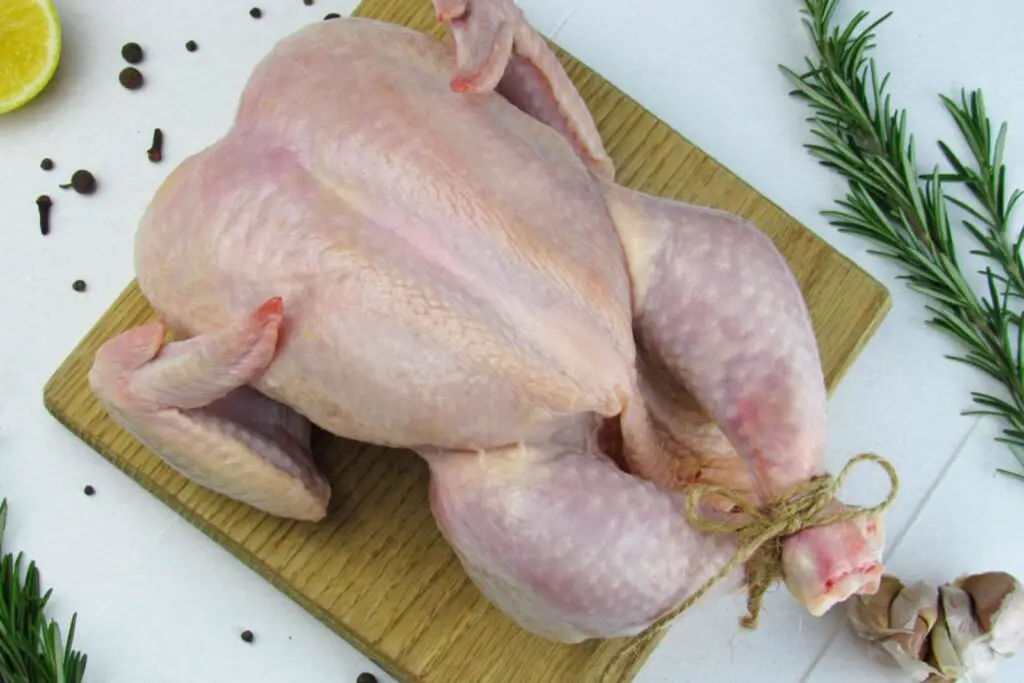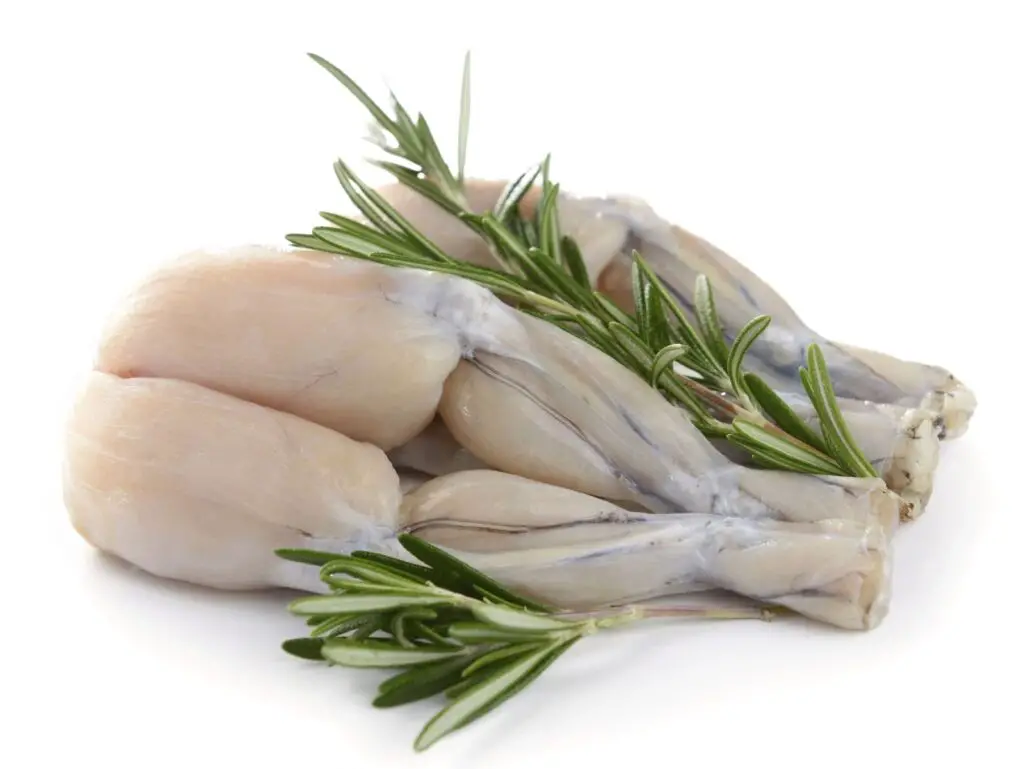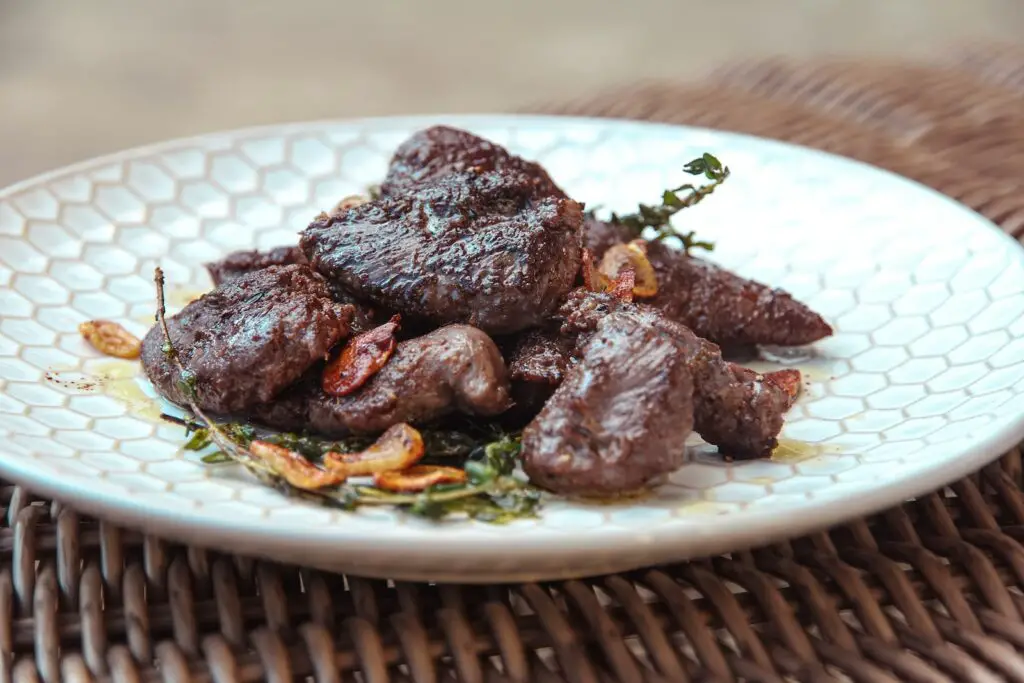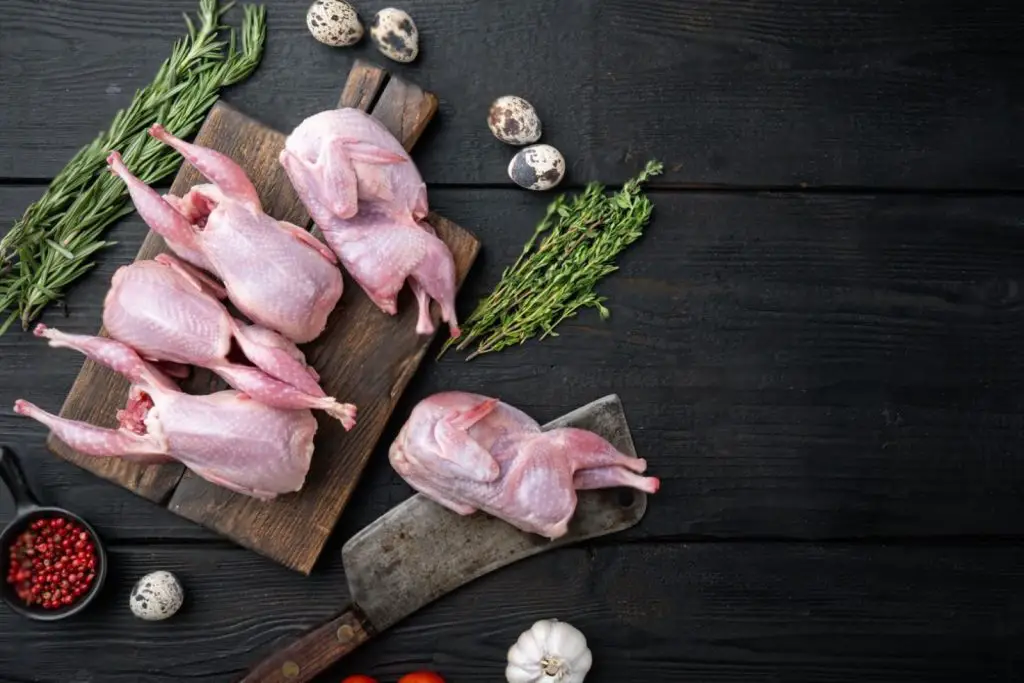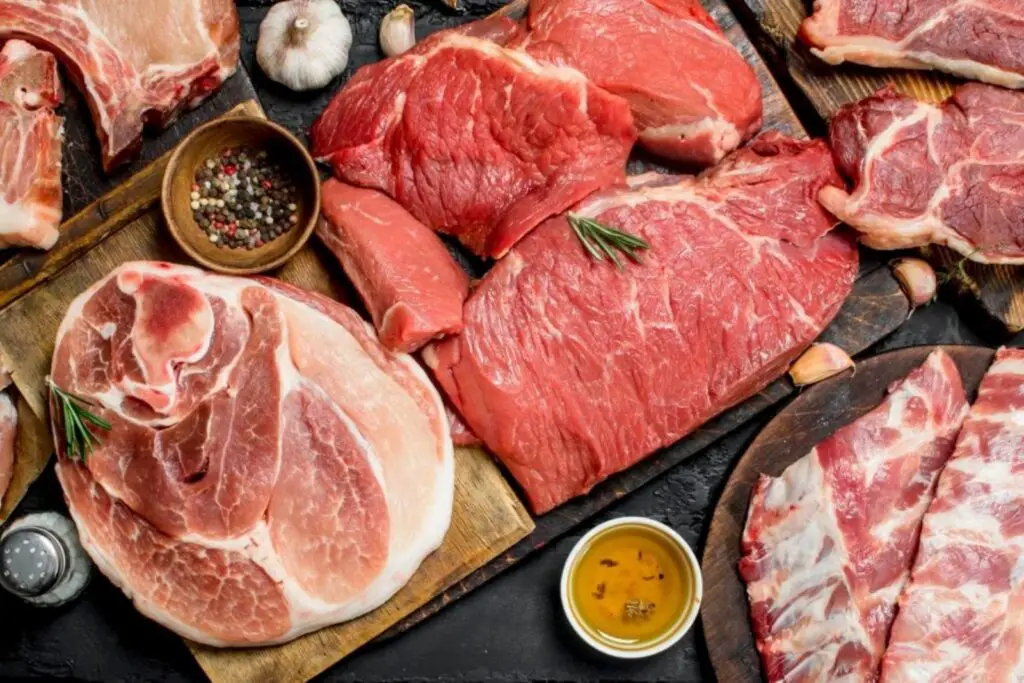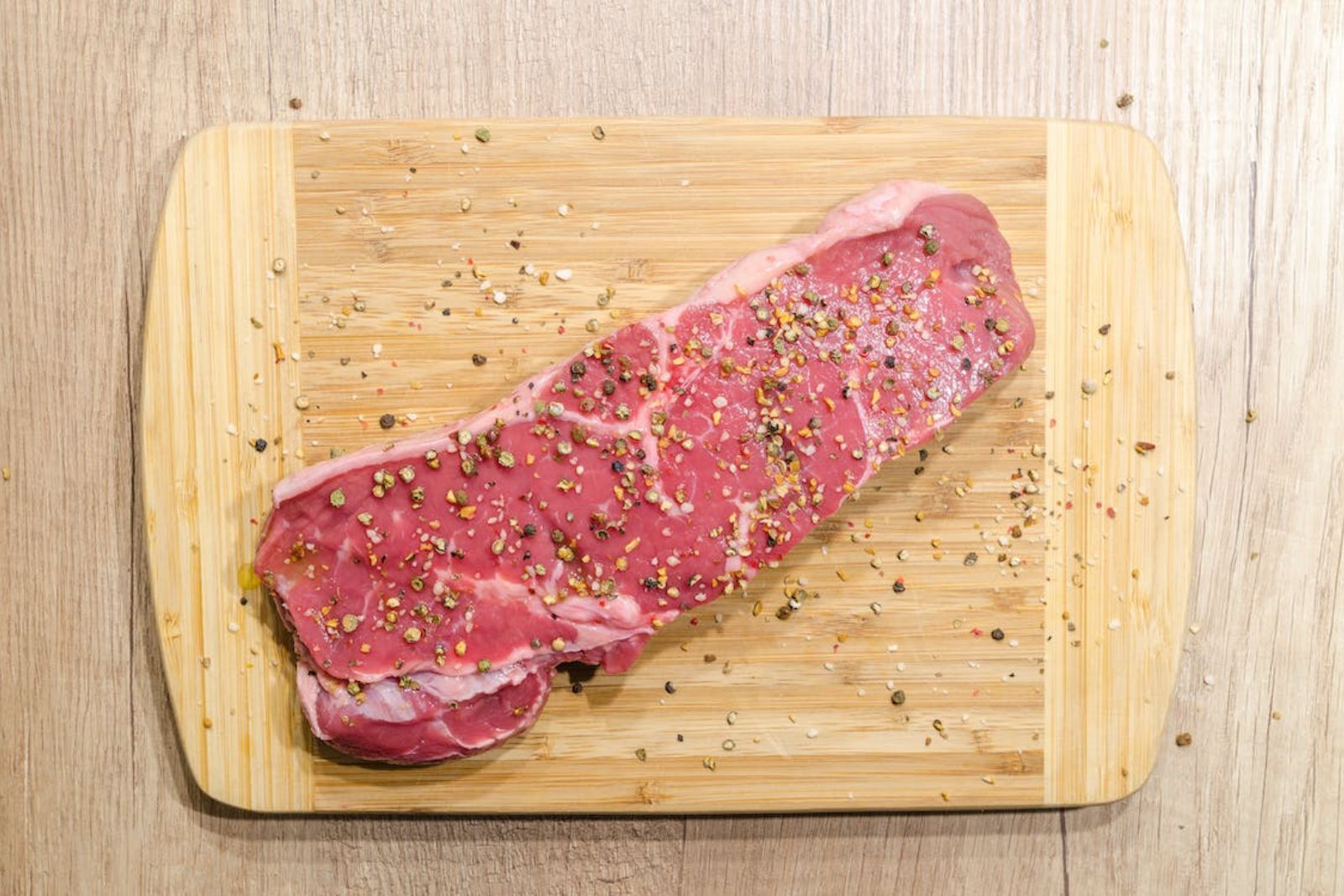
Beef is a versatile and succulent meat that has been a staple in cuisines across cultures for centuries. Beef is known for its rich flavor, tender texture, and ability to take on various cooking methods and flavors. From juicy steaks and hearty stews to mouthwatering burgers and savory roasts, beef offers endless possibilities in the kitchen.
Whether you’re a meat lover or enjoy indulging in a special occasion feast, beef is sure to satisfy your cravings. If you have excess beef or want to preserve it for later use, freezing is an excellent option. In this guide, we’ll delve into the art of freezing beef, sharing valuable tips and techniques to ensure that its quality, taste, and tenderness are maintained, allowing you to enjoy the goodness of beef whenever you desire, whether it’s for a comforting meal on a cozy evening or a delightful gathering with family and friends.
Here are the simple steps to freeze beef:
Step 1: Select the Right Cuts
When it comes to freezing beef, the first step is to select the right cuts of meat. The quality of the beef you choose will directly affect the results of freezing and the taste of the final dish. Here’s a closer look at why selecting the right cuts is crucial for successful freezing:
- Freshness and Quality: Opt for fresh, high-quality cuts of beef. Look for meat that is bright red in color, indicating its freshness. Fresh beef will have a pleasant aroma and a firm texture. It is recommended to source your beef from a reputable butcher or a reliable grocery store known for their quality meat.
- Suitable Cuts: Not all cuts of beef freeze well, so it’s important to choose cuts that are suitable for freezing. Steaks, roasts, ground beef, and stewing meat are all excellent options for freezing. These cuts can maintain their texture and flavor when properly frozen and thawed.
- Well-Marbled Beef: Marbling refers to the fat content within the muscle fibers of the beef. Well-marbled beef has thin streaks of fat distributed evenly throughout the meat. This marbling contributes to the tenderness, juiciness, and flavor of the beef. When freezing beef, opt for cuts that are well-marbled, as the fat helps keep the meat moist during freezing and thawing processes.
- No Signs of Spoilage: Before freezing, inspect the beef for any visible signs of spoilage. Look for discoloration, off-putting odors, or slimy textures, as these can indicate that the meat has started to spoil. Freezing will not reverse spoilage, so it’s important to start with fresh beef to maintain the quality of the frozen product.
By selecting fresh, high-quality cuts of beef that are well-marbled and free from any visible signs of spoilage, you set the foundation for successfully freezing beef. This ensures that the frozen meat retains its taste, texture, and overall quality, resulting in delicious dishes when thawed and cooked.
Step 2: Prepare the Beef
Properly preparing the beef before freezing is essential to ensure optimal results and maintain the quality of the meat. Here’s a detailed explanation of the key aspects involved in preparing beef for freezing:
- Trimming Excess Fat and Gristle: Before freezing, trim off any excess fat or gristle from the beef. While fat adds flavor and juiciness to the meat, excessive amounts can lead to off-flavors and negatively impact the texture during freezing. Removing visible fat also helps prevent rancidity and reduces the risk of freezer burn. Use a sharp knife to carefully trim away any unwanted fat or gristle from the beef.
- Dividing into Portions: Dividing the beef into portions that suit your needs is an important step in preparing it for freezing. Consider the serving sizes you typically require for your meals. You can portion the beef into individual steaks, family-sized roasts, or smaller portions for stews or ground beef. By dividing the beef, you can easily thaw and use only the amount of meat you need without having to defrost the entire package.
- Packaging for Freezing: Once you have trimmed and portioned the beef, it’s time to package it properly for freezing. There are several options for packaging, including plastic wrap, heavy-duty aluminum foil, or freezer bags. For individual cuts, wrap each piece tightly with plastic wrap to prevent air exposure and potential freezer burn. Then, you can further protect the wrapped cuts by placing them in a layer of aluminum foil or using freezer bags. Ensure that all excess air is squeezed out before sealing the packaging to minimize the risk of freezer burn and maintain the quality of the beef.
By preparing the beef before freezing, which involves trimming excess fat, dividing it into suitable portions, and packaging it appropriately, you set the stage for successful freezing. This preparation ensures that the beef maintains its taste, texture, and overall quality throughout the freezing and thawing processes.
Is it necessary to blanch beef before freezing?
Blanching beef before freezing is not necessary but can be beneficial in certain cases. Blanching involves briefly boiling the beef and then rapidly cooling it in ice water to stop the cooking process. This step can help preserve the beef’s color, texture, and nutritional value during freezing. However, if the beef is going to be used in recipes where blanching is not required, such as stews or slow cooking, it can be frozen without blanching.
Step 3: Wrap for Protection
Proper packaging is crucial for preserving the quality of frozen beef. It helps protect the meat from air exposure, which can lead to freezer burn and loss of flavor. Here’s a detailed explanation of how to wrap beef for optimal protection during freezing:
- Choose Freezer-Safe Materials: Select high-quality freezer-safe materials for wrapping the beef. Options include plastic wrap, heavy-duty aluminum foil, or specifically designed freezer bags. These materials are durable and resistant to moisture and freezer odors, ensuring that the beef remains well-protected.
- Individual Wrapping: For individual cuts of beef, start by tightly wrapping each piece with plastic wrap. This initial layer of plastic wrap acts as a barrier against air and helps prevent the formation of ice crystals, which can affect the texture and taste of the meat. Ensure that the plastic wrap is tightly secured around the meat to minimize air exposure.
- Additional Protection: After wrapping the beef with plastic wrap, add another layer of protection by wrapping it with a layer of heavy-duty aluminum foil. Alternatively, you can place the wrapped cuts in freezer bags. When using aluminum foil, make sure to wrap it tightly around the meat, covering all surfaces. If using freezer bags, press out as much excess air as possible before sealing to prevent freezer burn.
- Squeezing Out Excess Air: Regardless of the wrapping material used, it’s important to squeeze out any excess air from the packages. Air can contribute to the deterioration of the meat’s quality and can lead to freezer burn. Removing as much air as possible from the packaging helps maintain the integrity of the beef during freezing.
By properly wrapping the beef with high-quality freezer-safe materials, including individual wrapping with plastic wrap, adding an extra layer of protection with aluminum foil or using freezer bags, and squeezing out excess air, you create a protective barrier around the meat. This helps maintain the quality, taste, and texture of the frozen beef, ensuring a delicious dining experience when it’s time to thaw and cook the meat.
Step 4: Label and Date
Maintaining an organized freezer is key to easily accessing your frozen beef and ensuring its optimal freshness. Labeling and dating each package of frozen beef is a simple yet effective way to keep track of the contents and ensure proper rotation. Here’s a detailed explanation of why labeling and dating are essential:
- Easy Identification: Using a permanent marker, label each package of frozen beef with the specific cut of meat. For example, if you have different cuts like ribeye steaks, sirloin roasts, or ground beef, clearly indicate the type of beef on the packaging. This labeling makes it easier to identify the desired cuts when you’re ready to cook or thaw the meat.
- Date of Freezing: Alongside the label indicating the cut of beef, include the date of freezing on each package. Write down the day, month, and year when the beef was initially frozen. This dating ensures that you can keep track of how long the meat has been in the freezer, helping you prioritize the use of the oldest beef first.
- Rotation and Freshness: By dating the packages, you can practice proper rotation of your frozen beef. It’s important to use the oldest beef first to maintain optimal freshness. This way, you can ensure that none of the beef remains in the freezer for an extended period, potentially compromising its quality.
- Inventory Management: Labeling and dating the packages of frozen beef also facilitate inventory management. You can easily assess the quantity of each cut, plan meals accordingly, and make informed decisions about restocking your freezer.
By taking a few moments to label each package with the cut of beef and the date of freezing, you create an organized system for your frozen beef inventory. This allows for easy identification, proper rotation, and ensures that you use the oldest beef first to maintain optimal freshness and quality.
Step 5: Place to Freeze
Proper freezing techniques are essential to maintain the quality and texture of the beef during storage. To ensure optimal results, follow these steps when freezing beef:
- Quick Temperature Reduction: The key to proper freezing is to bring down the temperature of the beef quickly. Place the wrapped beef packages in the coldest part of your freezer, typically the back or bottom shelf. This area tends to have a more consistent and lower temperature. Avoid placing the beef near the freezer door, where the temperature fluctuates when opened frequently. By rapidly reducing the temperature, you can preserve the meat’s texture and flavor.
- Avoiding Contact with Other Foods: Ensure that the wrapped beef packages do not come into direct contact with other foods in the freezer. This prevents cross-contamination and helps maintain the integrity of the beef. Keep the beef separate from other items to prevent the transfer of odors and flavors.
- Rapid Freezing: The goal is to freeze the beef as quickly as possible. Rapid freezing helps minimize the formation of large ice crystals, which can damage the meat’s texture and lead to freezer burn. The quicker the beef freezes, the better it retains its moisture and overall quality. It is worth noting that freezing in smaller portions, as discussed in Step 2, can aid in the rapid freezing process.
By doing these proper freezing techniques, you ensure that the beef is frozen quickly and preserved at an optimal temperature. This helps maintain the texture, taste, and overall quality of the meat during storage.
How long beef can last in the freezer?
Beef can last in the freezer for an extended period if properly stored. On average, beef can be safely frozen for up to 12 months, although the quality may start to decline after about 6-9 months. The length of time beef can last in the freezer depends on factors such as the cut of beef, packaging, and maintenance of a consistently low temperature.
Step 6: Thaw the frozen beef
Thawing frozen beef safely is crucial to preserve its quality and ensure that it is safe to consume. Here’s a detailed explanation of the recommended method for thawing frozen beef:
- Refrigerator Thawing: The best and safest method for thawing frozen beef is to transfer it from the freezer to the refrigerator. This gradual thawing process allows the beef to thaw evenly and maintain its texture and juiciness. Place the wrapped beef packages on a plate or tray to catch any potential drips and prevent cross-contamination with other foods in the refrigerator.
- Slow Thawing: Thaw the beef slowly in the refrigerator, as this helps preserve the meat’s texture and minimizes moisture loss. The exact thawing time will depend on the cut and size of the beef. Generally, smaller cuts or ground beef may thaw within a few hours, while larger cuts or roasts may require overnight thawing. Plan ahead and allow sufficient time for the beef to thaw completely.
- Avoiding Room Temperature Thawing: Avoid thawing frozen beef at room temperature or using methods such as hot water or a microwave, as they can lead to uneven thawing and compromise the quality and safety of the meat. Room temperature thawing promotes bacterial growth, while hot water or microwave thawing can result in partial cooking of the outer layers of the beef.
- Safe Handling: During the thawing process, handle the beef safely to prevent any cross-contamination. Keep the beef wrapped while thawing and avoid contact between the raw meat and other foods. After thawing, discard any excess liquid that may have accumulated on the plate or tray to maintain food safety.
By thawing frozen beef in the refrigerator, allowing for slow and even thawing, you preserve the texture, moisture, and overall quality of the meat. This method ensures that the beef is safe to consume and ready for cooking once fully thawed.
Other related questions
Can you refreeze beef?
Refreezing beef is generally safe as long as it has been thawed properly and has not been left at room temperature for an extended period. However, the quality of the beef may be affected after being thawed and refrozen, resulting in potential changes in texture and flavor. It is recommended to refreeze beef only once and to use it within a reasonable time frame to maintain its quality and ensure food safety.
How do I know if the beef has gone bad after being frozen?
To determine if frozen beef has gone bad, inspect it for any noticeable changes in appearance, smell, or texture. Signs of spoilage may include discoloration, a sour or off-putting odor, slimy or sticky texture, or the presence of mold. If any of these signs are present, it is best to discard the beef, as consuming spoiled meat can lead to foodborne illnesses.
Can I freeze marinated beef for future use?
Yes, marinated beef can be frozen for future use. However, it is important to note that the texture and flavor of the beef may be slightly altered after freezing and thawing. The marinade may also lose some of its potency during the freezing process. It is advisable to freeze marinated beef in airtight containers or freezer bags, ensuring proper labeling with the date of freezing for easy reference.
Can I freeze cooked and uncooked beef?
Both cooked and uncooked beef can be frozen for later use. Freezing cooked beef allows for convenient meal planning and reducing food waste, while freezing uncooked beef helps to extend its shelf life. It is important to ensure proper packaging and labeling to maintain the quality and safety of the beef during freezing and subsequent thawing.
Are there any differences in freezing techniques for beef with bone-in versus boneless cuts?
Yes, there are differences in freezing techniques for beef with bone-in versus boneless cuts. For bone-in cuts, it is recommended to wrap the beef tightly in plastic wrap or use freezer bags to protect the exposed bone from freezer burn. Boneless cuts can be frozen in a similar manner but may require less packaging. Regardless of the cut, it is important to label and date the packages for proper organization and usage.

